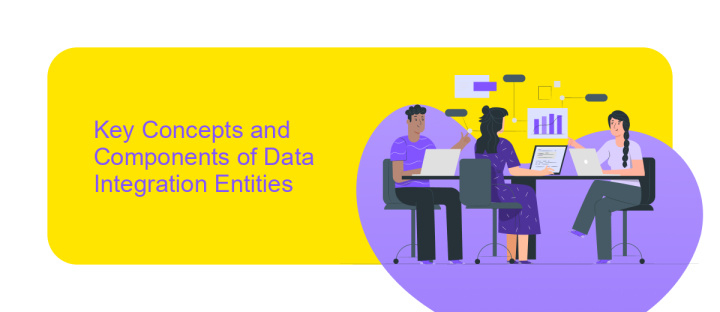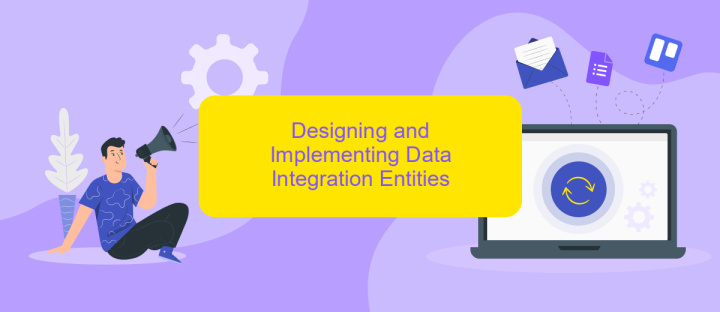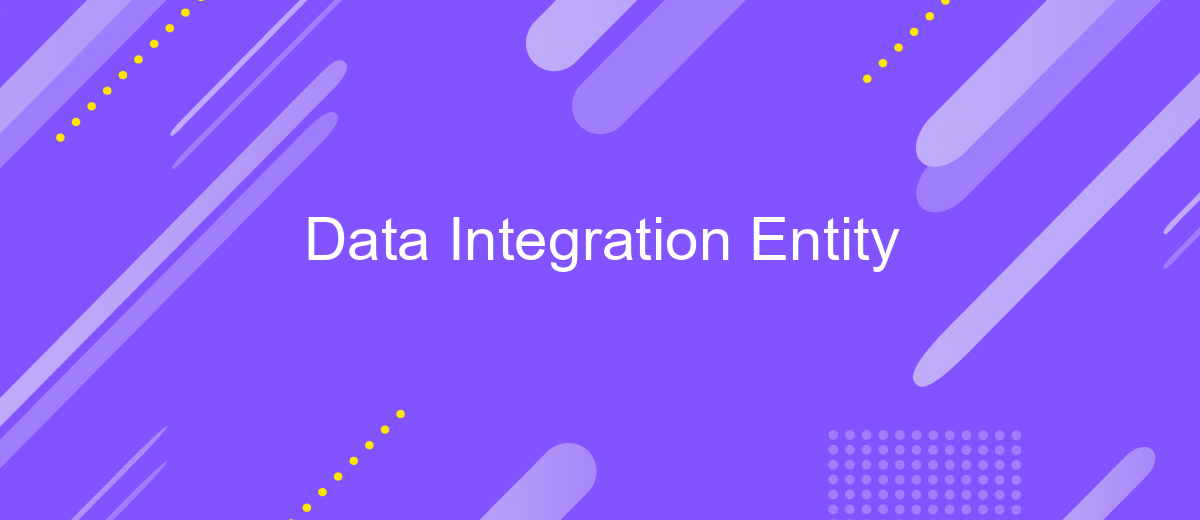Data Integration Entity
Data Integration Entity (DIE) serves as a pivotal component in modern data management, streamlining the process of consolidating data from diverse sources into a unified view. By facilitating seamless data flow and ensuring consistency, DIE enhances decision-making capabilities and operational efficiency. As organizations increasingly rely on data-driven strategies, understanding and implementing effective data integration techniques becomes essential for maintaining a competitive edge in today's dynamic digital landscape.
Introduction to Data Integration Entities
Data integration entities are pivotal components in modern data management, enabling seamless connectivity and coherence among disparate data sources. As organizations increasingly rely on diverse data systems, the need for efficient integration entities becomes paramount. These entities act as intermediaries, ensuring that data is accurately merged and accessible across various platforms, thereby enhancing data quality and consistency.
- Facilitate seamless data flow between heterogeneous systems.
- Ensure data consistency and accuracy across platforms.
- Enhance data accessibility and usability for end-users.
- Support real-time data processing and analytics.
- Improve decision-making through integrated data insights.
With the growing complexity of data environments, leveraging data integration entities is essential for businesses aiming to harness the full potential of their data assets. These entities not only streamline operations but also provide a robust framework for future scalability and innovation. By adopting advanced integration strategies, organizations can achieve a unified view of their data, driving efficiency and fostering informed decision-making in an increasingly data-driven world.
Key Concepts and Components of Data Integration Entities

Data integration entities are essential components in the seamless merging of data from disparate sources, ensuring a unified view and improved data accessibility. At the core of these entities are data connectors, which serve as bridges between different data systems, enabling smooth data flow. Transformation tools are also integral, as they convert data into compatible formats, ensuring consistency and accuracy across platforms. Furthermore, data mapping defines the relationships between data fields in different systems, facilitating proper data alignment and integration.
Another critical component is the data integration platform, which orchestrates the entire integration process. Platforms like ApiX-Drive offer user-friendly interfaces and automation capabilities, allowing users to set up integrations with minimal technical expertise. These platforms support real-time data synchronization, ensuring that data is always up-to-date. Additionally, monitoring and logging features provide transparency and traceability, allowing organizations to track data flow and diagnose issues promptly. Together, these concepts and components form the backbone of effective data integration strategies, empowering businesses to harness their data's full potential.
Designing and Implementing Data Integration Entities

Designing and implementing data integration entities requires a strategic approach to ensure seamless data flow across systems. It begins with understanding the specific data requirements and business objectives. This involves identifying the data sources, the nature of data to be integrated, and the desired outcomes. Once the needs are clear, a blueprint for the integration architecture can be developed, focusing on scalability, flexibility, and security.
- Identify and prioritize data sources based on business needs.
- Design a robust data model that supports integration.
- Select appropriate integration tools and technologies.
- Implement data mapping and transformation processes.
- Establish data governance and quality control measures.
Successful implementation of data integration entities ensures that data is accessible, accurate, and timely, supporting informed decision-making. Regular monitoring and maintenance of the integration processes are crucial to adapt to evolving business needs and technological advancements. By prioritizing a structured and methodical approach, organizations can achieve efficient and effective data integration, driving operational excellence and competitive advantage.
Best Practices and Common Challenges

Data integration entities are crucial for seamless data management across various platforms. To achieve effective integration, it's essential to follow best practices that ensure data consistency and reliability. One key practice is to establish clear data governance policies, which define data ownership, access rights, and quality standards. Additionally, utilizing scalable and flexible integration tools can help accommodate growing data volumes and diverse data sources.
Despite the advantages, integrating data entities comes with its own set of challenges. Data silos, inconsistent data formats, and security concerns are common obstacles that organizations face. Addressing these challenges requires a strategic approach and continuous monitoring of the integration process.
- Ensure data quality by implementing validation and cleansing processes.
- Use standardized data formats to facilitate interoperability.
- Regularly update and maintain integration tools to adapt to evolving technologies.
- Implement robust security measures to protect sensitive data during integration.
By adhering to these best practices and proactively addressing challenges, organizations can enhance the efficiency and effectiveness of their data integration processes. This not only improves data accessibility but also supports informed decision-making and operational excellence.


Future Trends and Conclusion
As we look to the future of data integration entities, several trends are poised to reshape the landscape. The increasing adoption of artificial intelligence and machine learning will enable more intelligent and automated integration processes, reducing the need for manual intervention. Additionally, the rise of cloud-based solutions will continue to drive the demand for seamless data integration across diverse platforms. Services like ApiX-Drive are at the forefront, offering user-friendly interfaces and powerful capabilities to streamline integration tasks, making it easier for businesses to connect disparate data sources efficiently.
In conclusion, the evolution of data integration entities will be characterized by greater automation, enhanced interoperability, and improved user experiences. As organizations strive to harness the full potential of their data, the ability to integrate information from various sources will become increasingly critical. By leveraging advanced technologies and innovative services, businesses can achieve a more cohesive and agile data ecosystem, ultimately driving better decision-making and competitive advantage. Embracing these trends will be essential for staying ahead in a rapidly changing digital landscape.
FAQ
What is Data Integration Entity?
Why is data integration important for businesses?
How can businesses automate data integration processes?
What challenges might businesses face during data integration?
How does data integration support data analysis?
Time is the most valuable resource for business today. Almost half of it is wasted on routine tasks. Your employees are constantly forced to perform monotonous tasks that are difficult to classify as important and specialized. You can leave everything as it is by hiring additional employees, or you can automate most of the business processes using the ApiX-Drive online connector to get rid of unnecessary time and money expenses once and for all. The choice is yours!

